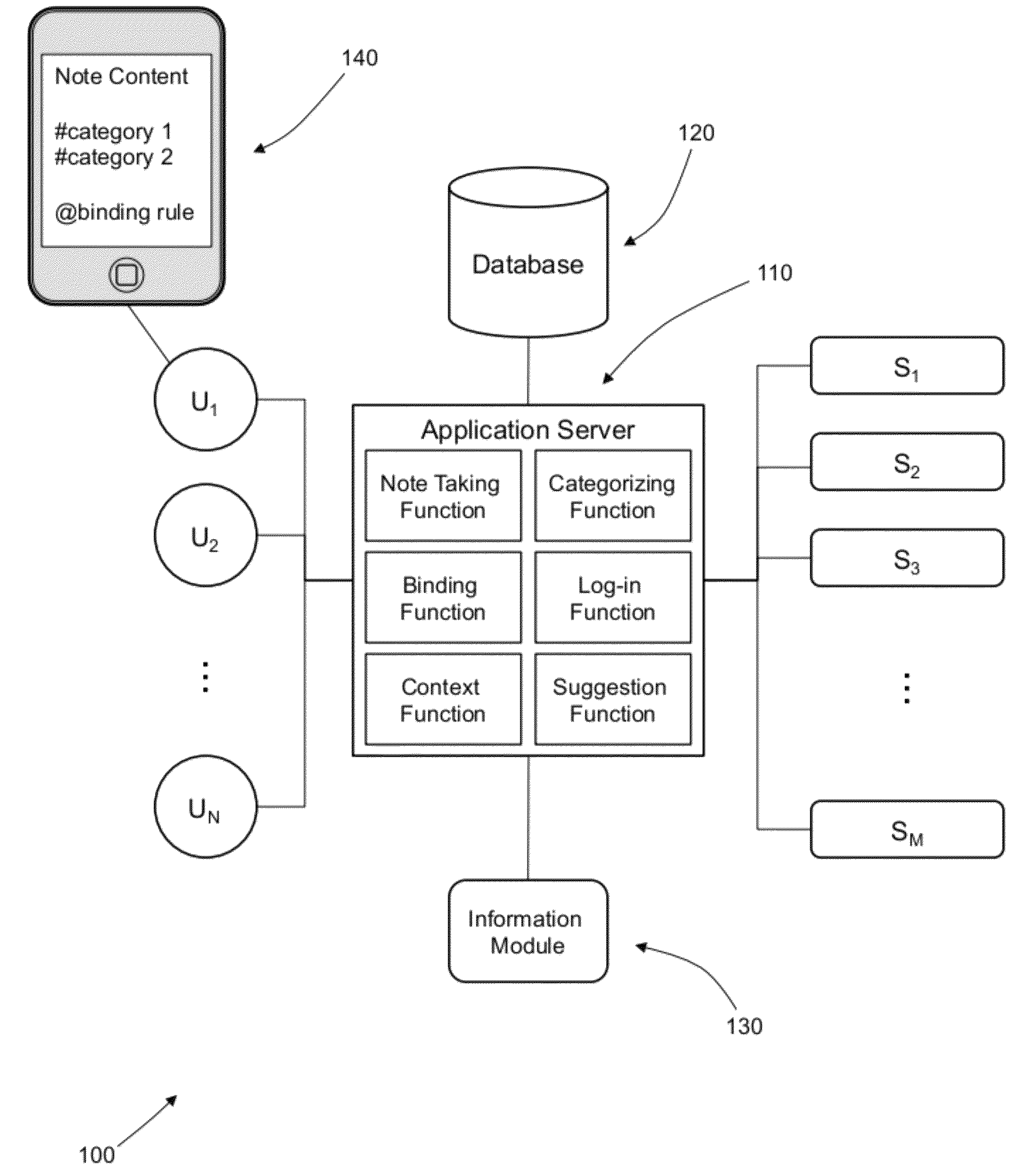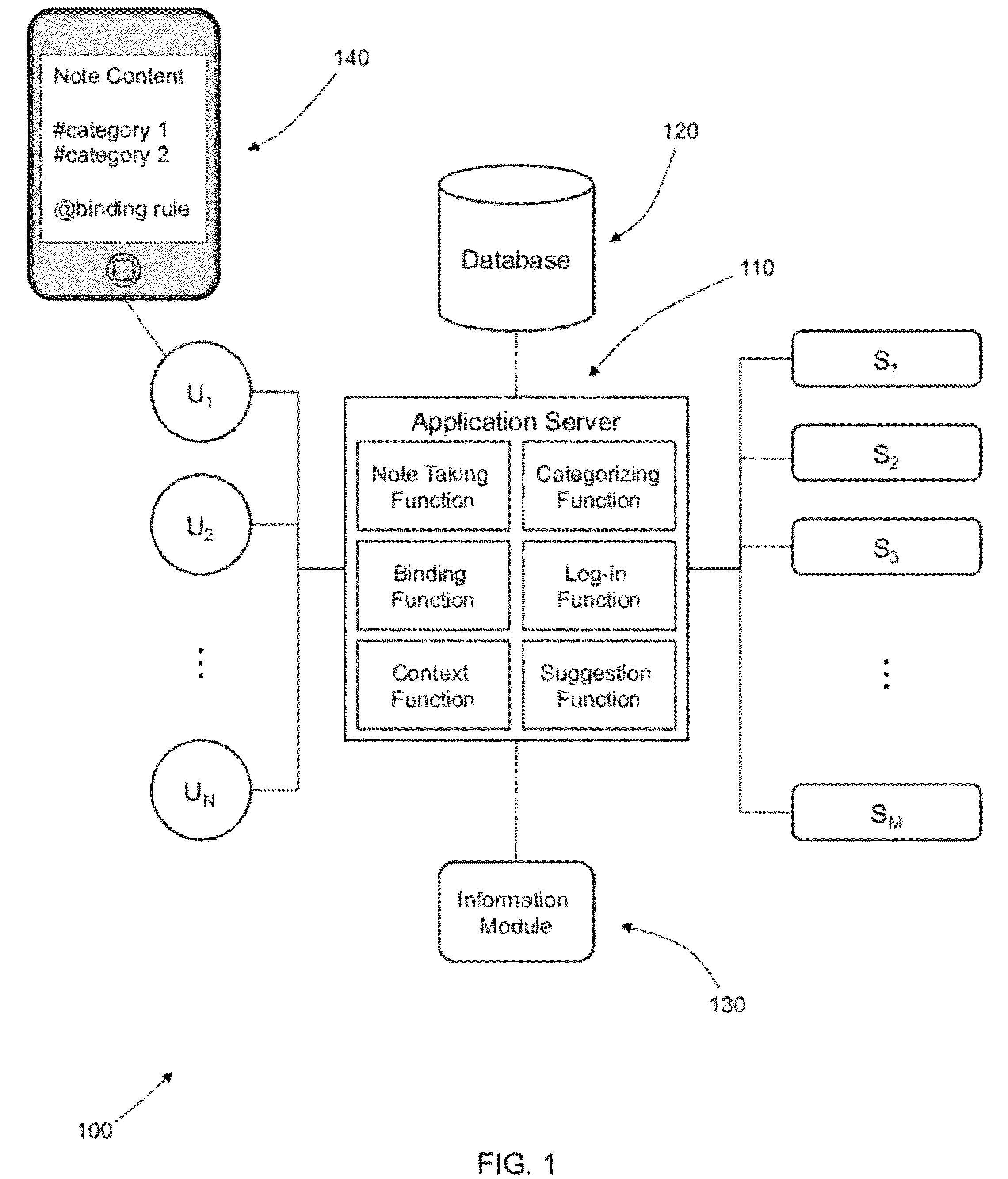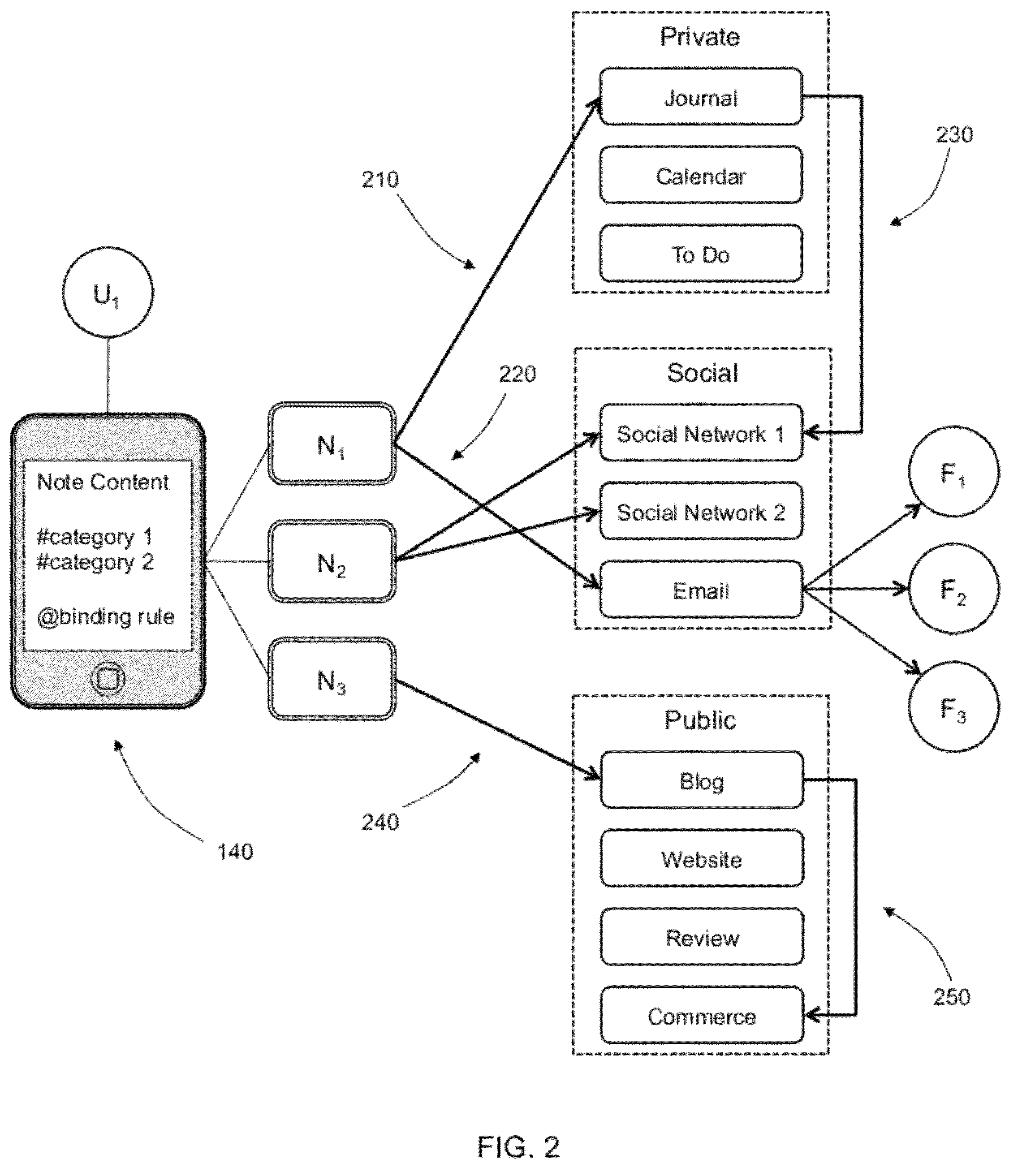Content management system using sources of experience data and modules for quantification and visualization
a content management system and data source technology, applied in the field of online social media, can solve problems such as inability to organize information, information overload, and many users' lives and brains floating around in disorganized information, and achieve the effects of reducing the number of users, and increasing the number of users
- Summary
- Abstract
- Description
- Claims
- Application Information
AI Technical Summary
Benefits of technology
Problems solved by technology
Method used
Image
Examples
example 1
Product Review
[0073]A user enjoys a product, such as a glass of wine. During a dinner engagement The user jots down information related to the wine, such as the brand, vintage, variety, etc., by accessing a user interface to the semantic note taking system. The note includes a label of “#wine” for future reference to the note. Context traits, including the GPS coordinates where the note was created is associated with the note. Using the GPS coordinates and accessing a directory information module, the name of the restaurant is derived and automatically associated with the note. The note is saved in the database.
[0074]At a later date, the user chooses to discuss the wine with friends of the user who may be wine enthusiasts. By binding the wine review note to a social network or an email application, the note is communicated to one or more friends of the user. One of the friends writes a brief review of the wine and attaches that review to the note. After the note has been shared to f...
example 2
Retail
[0075]FIGS. 12A-B show an example of a retail application with bidding from multiple online retailers 1230. In FIG. 12A, user U1 creates a note 1220 on a user device 1210. The note 1220 includes an identification of a product and binding rules that indicate it is to be bound to retailers R1, R2, and RN. The note 1220 is communicated to the retailers R1, R2, and RN based on the binding rules. After the note 1220 is received by the retailers R1, R2, and RN, the retailers send offers 1240 to user U1 for the product described in the note 1220. Alternatively or additionally, the retailers R1, R2, and RN can send advertisements, coupons, or any information relating to the product to the user U1.
example 3
Health
[0076]The present invention can be directed to a dietary, health, or medical service. For example, with minimal friction, a user can submit his or her dietary behavior to be tracked by a diet service. In another example, medical information can be collected at a hospital visit or doctor's appointment and submitted to an electronic medical record (EMR) application.
PUM
 Login to View More
Login to View More Abstract
Description
Claims
Application Information
 Login to View More
Login to View More - R&D
- Intellectual Property
- Life Sciences
- Materials
- Tech Scout
- Unparalleled Data Quality
- Higher Quality Content
- 60% Fewer Hallucinations
Browse by: Latest US Patents, China's latest patents, Technical Efficacy Thesaurus, Application Domain, Technology Topic, Popular Technical Reports.
© 2025 PatSnap. All rights reserved.Legal|Privacy policy|Modern Slavery Act Transparency Statement|Sitemap|About US| Contact US: help@patsnap.com



